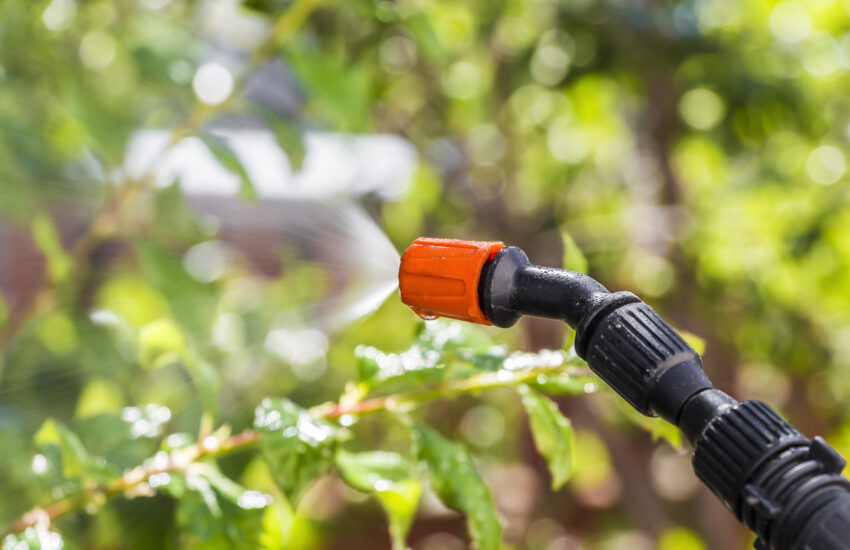Environmental groups are once again urging the Ninth Circuit Court of Appeals to compel the U.S. Environmental Protection Agency (EPA) to expedite its re-evaluation of atrazine, a widely used herbicide with significant environmental and health concerns. This legal push highlights the ongoing struggle between regulatory bodies and environmental advocates over the safety and regulation of chemical substances in agriculture.
Atrazine is one of the most commonly used herbicides in the United States, primarily applied to control broadleaf and grassy weeds in crops like corn, sugarcane, and sorghum. Despite its effectiveness in agriculture, atrazine has been a subject of controversy due to its potential environmental and health impacts. Research has linked atrazine exposure to complications of endocrine systems, leading to hormone disruption, reproductive issues, birth defects, and certain types of cancer in animals and humans.
The current legal action stems from a petition filed by environmental groups in October 2020, which called for the EPA to re-evaluate its interim registration review decision on atrazine. The EPA had requested a partial remand to focus solely on this re-evaluation, which the court granted in December 2021. However, more than three years later, the EPA has yet to complete this process, prompting the groups to seek judicial intervention once again.
The environmental groups argue that the agency’s yearslong delay in completing a court-ordered review of atrazine has allowed “serious harm to people, plants, and wildlife.” The groups are urging the Ninth Circuit to force the EPA to complete a revised review of atrazine’s risks by the end of June. The Center for Biological Diversity has been vocal in this fight, noting that atrazine is banned in at least 60 other countries due to its links to birth defects and cancer.
Nathan Donley, the environmental health science director for the center, stated, “Nothing short of a complete ban on atrazine will end the harm this extraordinarily dangerous pesticide is doing to human health and the thousands of waterways it has poisoned.”
Atrazine’s impact on the environment and human health cannot be overstated. It is one of the most pervasive pesticide contaminants in water. The herbicide’s persistence in the environment means it can remain in soil and water for extended periods, increasing the risk of exposure. This has led to calls for stricter regulations and even a complete ban on its use. Environmental groups argue that the EPA’s current regulatory measures are insufficient to protect public health and the environment.
The EPA has acknowledged the need for a thorough re-evaluation of atrazine and has taken steps to address the concerns raised by environmental groups. In September 2020, the agency released an interim registration review decision that included mitigation measures to protect human health and the environment. However, these measures have been criticized as inadequate, leading to ongoing legal challenges.
During the remand process, the agency has proposed several changes to the atrazine interim decision. In July 2022, the EPA proposed lowering the herbicide concentration threshold to 3.4 micrograms per liter. However, in July 2024, the agency changed its proposal to 9.7 micrograms per liter. Environmental groups argue that this latest revision does not go far enough in protecting wildlife and public health.
Atrazine is regulated by the EPA under the Federal Insecticide, Fungicide, and Rodenticide Act (FIFRA). Here are some key points about its regulation:
- Registration Review: The EPA is required to review each registered pesticide at least every 15 years to ensure it does not pose unreasonable risks to human health or the environment. This process includes risk assessments and the implementation of mitigation measures.
- Interim Registration Review Decision: In September 2020, the EPA released an interim decision for atrazine, which included measures to mitigate potential ecological risks and protect human health. These measures were finalized in November 2021.
- Mitigation Measures: The EPA has implemented several mitigation measures to reduce atrazine runoff from treated fields. These include restricting annual application rates and implementing buffer zones around water bodies.
- Aquatic Plant Protection: In July 2024, the EPA updated the level at which atrazine is expected to adversely affect aquatic plants. The new concentration level is set at 9.7 micrograms per liter (µg/L), which will be used to develop revised regulatory decisions to protect aquatic plants, fish, invertebrates, and amphibians.
- Public Input and Legal Challenges: The EPA has solicited public comments on its proposed mitigation measures and has faced legal challenges regarding its regulatory decisions. In December 2021, the Ninth Circuit Court of Appeals granted the EPA a voluntary partial remand to re-evaluate its policy decisions.
The outcome of this legal battle will have significant implications for the regulation of atrazine and other pesticides in the United States. If the Ninth Circuit grants the environmental groups’ request, it could force the EPA to expedite its re-evaluation process and implement stricter regulations on atrazine. This would be a major victory for environmental advocates and a step towards greater protection of public health and the environment.
In the meantime, the debate over atrazine continues to highlight the challenges of balancing agricultural needs with environmental and health concerns. As the EPA works to complete its re-evaluation, it is crucial the agency considers the latest scientific evidence and the voices of affected communities.
The case is Rural Coalition et al. v. Environmental Protection Agency et al., case number 20-73220, in the U.S. Court of Appeals for the Ninth Circuit.

